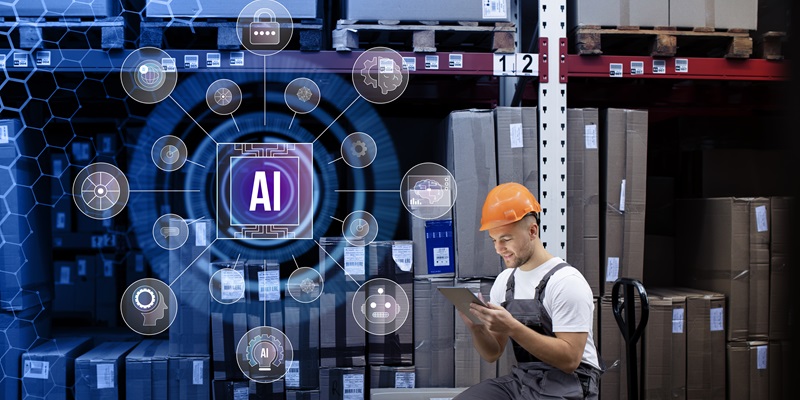In today’s digital age, physical operations have struggled to keep up with the advancements in technology, relying on outdated paper documents and manual processes. However, there is a game-changing solution on the horizon. Advances in technology, particularly in the realm of Artificial Intelligence (AI), have paved the way for connected operations, transforming the way physical operations function. By harnessing the power of AI, businesses can capture and analyze vast amounts of data from assets in the field, optimizing processes and driving efficiency like never before.
Capturing Data from Field Assets
Traditionally, physical operations were limited in their ability to gather data from their field assets. However, with technological advancements, companies can now capture more data than ever before. This includes data from sensors, IoT devices, and other sources, opening up a world of possibilities. Importantly, this data can be seamlessly brought into the cloud, where AI algorithms can analyze it to provide valuable insights and drive informed decision-making.
Dealing with Massive, Multimodal Data
The scale of data generated by physical operations can be overwhelming, often reaching the petabyte scale. Furthermore, this data is typically multimodal, combining different types such as text, images, and sensor readings. To gain meaningful insights from this vast amount of information, companies need to analyze it holistically, unearthing hidden patterns and correlations. This is where AI excels, allowing for the analysis of multimodal data sets and providing valuable real-time insights.
AI as the Solution for Extracting Value
As physical operations deal with massive amounts of data, AI becomes the natural fit for extracting value and turning it into actionable insights. AI models and algorithms can process and analyze data at an unprecedented speed, uncovering valuable patterns and anomalies that might have otherwise gone unnoticed. The beauty of AI lies in its adaptability, with quick start options available that make it accessible to companies of all sizes.
Importance of Preventative Insights and Real-Time Alerts
Frontline workers in physical operations face various risks and challenges. That’s where the power of AI truly shines. Through preventative insights and real-time alerts powered by AI, workers can be alerted to potential safety hazards, allowing for immediate action to be taken. By identifying and addressing issues before they escalate, AI plays a crucial role in enhancing worker safety and overall operational efficiency.
Impact of AI in Specific Areas
1. Safety Improvements: One of the most significant impacts of AI lies in safety improvements. Through the utilization of AI-powered dashcam devices, unsafe driving behavior can be detected in real-time, triggering audio alerts. This technology has the potential to drastically reduce the number of accidents and ensure the well-being of all road users.
2. Predictive Maintenance: The transition from preventative to predictive maintenance is revolutionized by AI. Through the analysis of historical and real-time data, AI algorithms can anticipate equipment failures before they occur. This enables companies to schedule maintenance at the optimal time, saving costs and enabling smarter work for maintenance teams.
3. Automated Workflows: AI can automate and streamline day-to-day tasks for operations workers. By integrating AI-driven systems into their workflows, operations workers can have access to real-time information, optimized routes, and detailed instructions. This not only increases efficiency but also enhances overall productivity.
AI in Commercial Vehicles for Safety
In the realm of commercial vehicles, AI can be a game-changer for safety improvement. By running AI algorithms on dash cam devices, companies can detect unsafe driving behaviors such as distracted driving, sudden lane changes, or tailgating, triggering real-time audio alerts. These interventions have the potential to save lives and reduce accidents on the road.
Transformation from Preventative to Predictive Maintenance
Preventative maintenance has long been a staple in physical operations, ensuring regular inspections and repairs. However, AI takes maintenance to a whole new level by enabling predictive maintenance. By analyzing sensor data, equipment performance, and other relevant factors, AI algorithms can provide insights into the optimal time for maintenance, minimizing downtime and maximizing operational efficiency.
Automation and Streamlining of Daily Tasks
AI has the ability to automate and streamline day-to-day tasks for operations workers. From inventory management to scheduling and dispatching, AI systems can take over repetitive and time-consuming tasks, freeing up workers’ time and enabling them to focus on more complex and strategic operations. Moreover, AI can provide workers with the necessary information at the right time, reducing errors and enhancing productivity.
The potential of AI in optimizing physical operations cannot be understated. From filling knowledge gaps to automating workflows, AI has the power to transform the complex and traditionally labor-intensive world of physical operations. By leveraging AI technologies, companies can unlock the full potential of their operational data, driving efficiency, reducing costs, and ensuring the safety of their workers. As AI continues to evolve, its role in physical operations will only become more prominent, revolutionizing the way we work and operate in the field.

